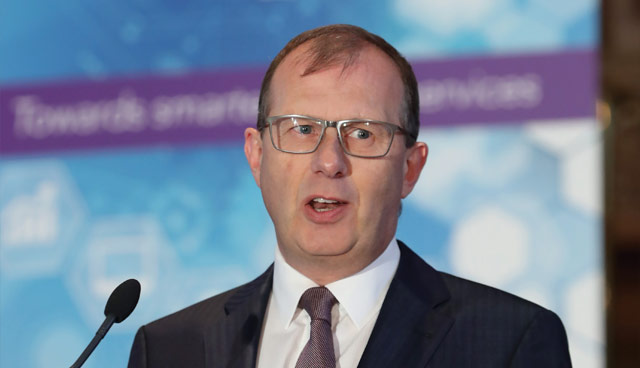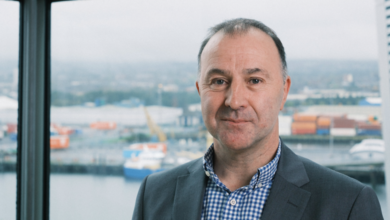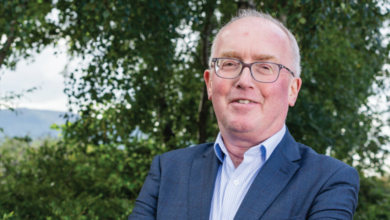Why digital matters

Paul Wickens, Chief Executive of Enterprise Shared Services (ESS) for the Northern Ireland Civil Service (NICS), discusses the journey of digital government in Northern Ireland to date and offers some insight on the future roadmap of three new key strategies.
Paul Wickens outlines that a lot has changed since the original concept of nidirect and a single channel to government was first explored a decade ago. Galvanised by the digital revolution, ESS surpassed their original target of delivering 16 fully transformed services by 2016, with a current figure of over 35, these services have facilitated in excess of 18 million new digital transactions since April 2016. Saving efficiencies through the digital transformation programmes are now estimated to be close to £90 million but these savings have been a by-product rather than the main driver which is to improve services to the public, he explains.
Despite the positive advancements, Wickens highlights that the moves were not without resistance: “At the early stages of our programme we had to work hard to convince people of the benefits of transforming services end to end, instead of just replacing what they had with a new contract.” The result has been that nidirect.gov.uk now generates more hits on a per capita basis than the UK’s GOV.UK, a key facet behind its UN recognition as the world leader in digital government.
ESS has recently published three interlinked strategies which will help define the future pathway of digital government in Northern Ireland, comprising:
- ICT Strategy 2017-2021;
- Making Lives Better: A strategy for digital transformation of public services 2017-2021; and
- Cyber Security: A strategic framework for action 2017-2021.
Digital transformation
“The vision set out in in the strategy is that we will transform how government works, by leveraging digital methods and innovative technologies to make lives better,” explains Wickens. “Our aim is to continually strive to deliver simple, effective and smart digital services that support successful delivery of an Outcomes Delivery Plan.”
Wickens elaborates that the vision for the strategy is that people and businesses will be enabled to digitally engage with government at a time and place that suits them, that government operations are digitally transformed to deliver effective and efficient public services and that government aspires to embrace digital in everyday public services to deliver better outcomes.
The means to achieving these, he states, will be through enhancing and evolving the role of the Digital Transformation Service to work with the public sector as a trusted partner and supplier to support the transformation and delivery of digital shared services, engaging more on citizen expectation, demonstrating the value of investing in digital to support transformation through a new framework of contracts to be more effective moving forward and development of people to lead the transformation and delivery of digital shared services.
He adds: “To date, we have relied heavily on our partner community to deliver digital transformation. It’s time now to focus on developing our people and we are taking steps to assess our own internal capability and capacity to see how we can address this.”
Pointing to the nine recognised enablers of the strategy, which includes the likes of innovation, digital inclusion and delivery capability, Wickens calls for input from both government staff and partners to help ESS understand the most innovative solutions and best method of delivery.
Cyber security
Turning to the cyber security-related strategy, Wickens outlines that it is based around the three key themes of: defend, deter and develop. He emphasises that not only has the National Cyber Security Centre (NCSC) within the UK changed the whole structure of the cyber support network but that the strategy is also working towards helping ESS fulfil their obligation under the new Network Information Systems (NIS) Regulations 2018 directive, which came into force in the UK on 10 May 2018.
As part of this, ESS have had to set up a local regulator (a local competent authority) to act as both a reference point for organisations on the new directive but also to potentially impose fines on those organisations who suffer serious breaches.
Wickens admits: “It is something that came on us very suddenly. It is an area that not many people were aware of but unfortunately it sat alongside the same timescale as implementation of GDPR. It means that essentially organisations could be hit twice under two sets of regulations and we are trying to work through what the implications of that might be.”
Summarising the strategy, he says: “Cyber security is a key theme for us and it’s something, especially public servants cannot take for granted. Our goal is to improve protections for the whole IT infrastructure of the public sector. We have invested heavily in this area but we recognise that there is still a lot of work to do to deliver on our ambition.”
ICT
The ICT Strategy, a more inwardly focussed programme but which still links heavily with the other two strategies, is a “clear vision of where we want to be by 2021”, says Wickens. Summarising the strategy, he outlines that its key aim is to build upon “the exceptional asset” that is the existing IT shared service. “We have the infrastructure and we have fantastic capability in terms of people and resource. What we want to do is sweat that asset as much as we can.”
Wickens explains that this is going to mean further consolidation of IT service and infrastructure services specifically, and increasing the customer base to realise economics of scale. “The reasons for doing this are very simple. We want better services for our users but we also have a massive driver to reduce the costs of our service delivery to live within systematic budget cuts.”
Outside of the three strategies, Wickens points to a number of ESS programmes running which both affect said strategies and also impinge on what’s happening on the digital transformation journey.
One of these is the Public Sector Shared Services Programme (PSSSP), which through the Stormont House Agreement sets out a clear mandate for ESS to take shared services to the wider public sector. Wickens is part of a team, led by the Head of the Civil Service David Sterling, collectively working towards developing a business case assessing the options for the whole of the public sector.
Explaining why such a move is important, he highlights that 5,500 public sector employees currently deliver HR, Finance and IT services at a cost of £0.5 billion pounds a year. This represents a major potential area for savings and efficiency through transformation and innovation.
Another programme having an impact is Reform of Property Management, a move aimed at consolidating the government estate to generate more effective workplaces. “We have a terrific opportunity to improve the working environment for our staff and to open up opportunities for agile working enables by the latest technologies”. A strategic benefit of this approach is to significantly reduce the costs of the government office estate. Today we have 12 desks to 10 people and we need to get down to eight desks per 10 people. To put this another way, we’re sitting with an average of 17sq metres per full-time employee and our goal is to reduce that to 10sq metres. If achieved, there is potential annual savings of £30 million. The strategy is important because it recognises that buildings are as much a part of our infrastructure as the digital services we are providing.
“Collectively, implementation of these interlinked strategies and programmes is driving a new way of working by putting people first. Users of government services will be assured that an easier and safer way of doing business with government is continuing. For many today it is as quick and easy to apply for licences, make appointments and get information as it is to book a flight or hotel room online on their favourite digital device. Furthermore, the cost savings that accrue can be put to different use across public services.
“We are on a journey which has delivered success but we continue to challenge our processes and procedures. Our focus more recently is on personalising the digital government experience. So watch this space.”





